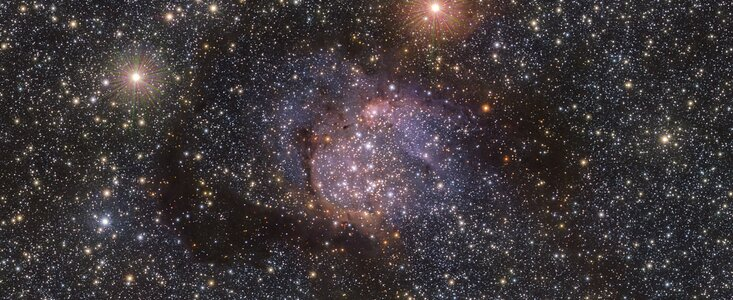Discovery of a nursery of stars in the constellation Serpens

Hundreds of new stars are revealed by the European Southern Observatory's Vista telescope.

The Sh2-54 nebula seen in visible light by the VLT Survey Telescope, at the Paranal Observatory, Chile.
6,000 light-years from Earth, in the constellation Serpens, the Sh2-54 nebula was photographed by the Visible and Infrared Survey Telescope for Astronomy (Vista) of the European Southern Observatory (ESO). This star nursery, whose name (sh) pays homage to the American astronomer Steward Sharpless, who cataloged more than 300 nebulae in the 1950s, is unveiled for the first time.
Infrared to pierce the dust
The Vi sta telescope , installed in the Atacama desert in northern Chile, is equipped with a large mirror (4.1 meters in diameter) and a 3-tonne camera with 67 million pixels. The machine operates in the near infrared, an area of the light spectrum which is less affected by disturbances caused by dust grains which mask visible light much more. Nebulae are particularly affected by this phenomenon since they are composed of vast clouds of gas and dust within which stars are born.

The nebula seen by the Vista Telescope. Dust clouds are less visible and more stars appear. Click on the image for an HD version. Credits: ESO/VVVX .
Learn more about star formation
With its infrared view, Vista reveals a multitude of stars hidden behind veils of dust. This telescope is particularly useful because it allows scientists to study in much more detail what happens in the nurseries of stars, and therefore to learn more about star formation. The image was taken as part of the VVVX (Vista Variables in the Via Láctea eXtended) study. This is a multi-year project that has repeatedly observed much of the Milky Way at infrared wavelengths.
Source : websites

